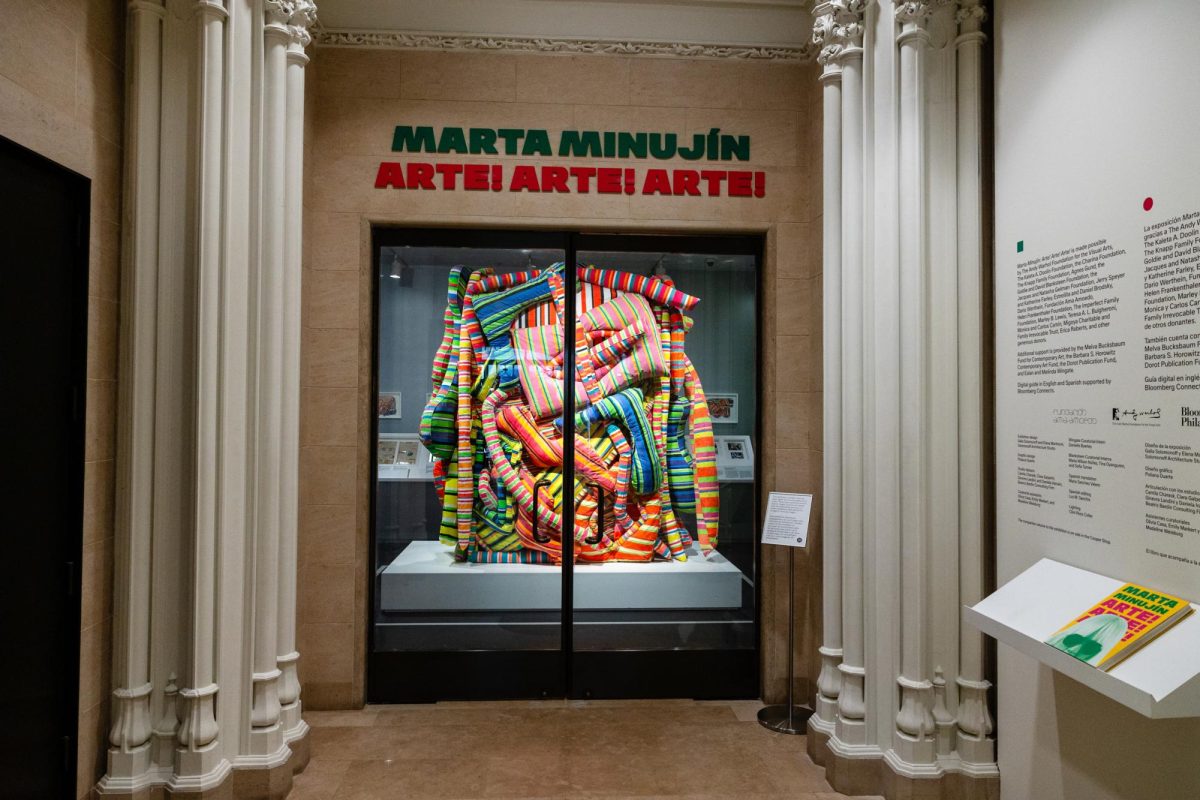Behind large glass doors directly opposite to the Jewish Museum’s entrance, Marta Minujín’s gigantic mattress sculpture “Intertwined Concepts” invites viewers into her colorful mind. The sculpture is essentially a huge pile of neon-striped mattresses varying in shapes and sizes, hinting to all the upcoming bright fun.
“Marta Minujín: Arte! Arte! Arte!” at the Jewish Museum is Minjuín’s first-ever U.S. survey exhibition, which is essentially an overview of an artist’s work, with nearly 100 objects on view from the 1950s to today. Additionally, the show features labels in both English and Spanish.
Originally from Buenos Aires, Argentina and born to Russian-Jewish immigrants, Minujín is a world-renowned artist who has spent time creating around the globe. She worked in New York, Paris and Washington, D.C., as well as her home country of Argentina, and has collaborated with other monumental artists, such as Andy Warhol. Minujín’s style is eclectic, colorful and lighthearted, but each of her works is also deeply meaningful — a duality worth appreciating.
Minujín’s defining pieces are her mattress sculptures, which she began creating in the 1960s. She transforms mattresses, painting them with brightly colored stripes, using them as materials in much of her artwork. According to wall text, Minujín looks to evoke “a feeling (happy), a style (fun), and a look (bright) that embraces contemporary youth culture” — and these sculptures do.
“For Making Love Inconspicuously” is an enormous sculpture made of acrylic, tempera and lacquer on mattress fabric with foam rubber. The background of the piece is a pink striped rectangle, and on the foreground, multiple other pieces of colored mattresses hang off of it. This is only one of the many grandiose mattress structures in the space, and they all elicit smiles and excitement.
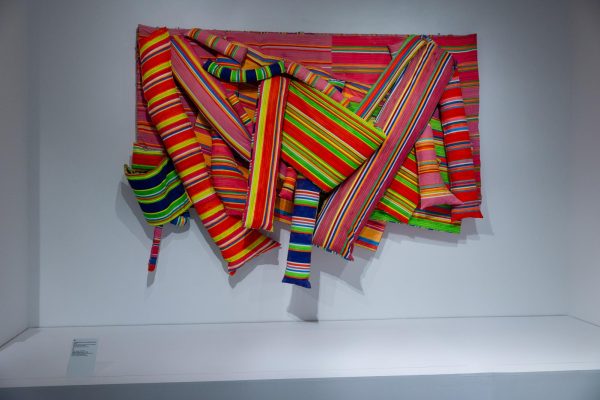
Minujín does not just think mattresses are a fun medium to work with; they hold a deeper meaning — “Half of your life takes place on a mattress. You are born, you die, you make love, you can get killed on the mattress. That’s why mattresses are so important,” the artist said in an interview with one of the curators Rebecca Shaykin.
“Implosion!,” an installation with digital projections and sound, is a booth entirely devoted to the patterns on these mattress sculptures. Upon entering the booth, a swirling colorful striped pattern immerses the viewers into a facet of Minujín’s mind. A video of these stripes is projected onto all four walls, the ceiling and the floor and is played alongside classical music.
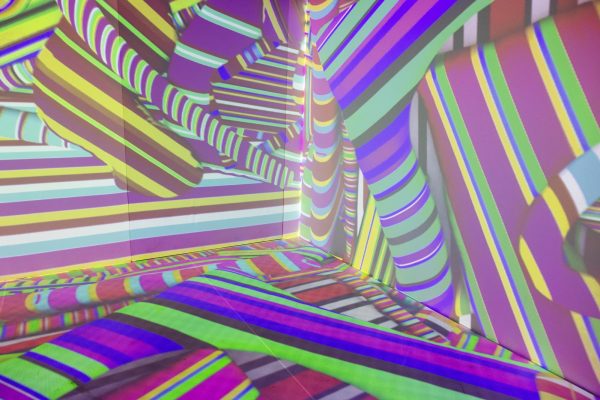
Minujín’s work, however, does not only revolve around the mattress as a material. Many of her artworks center around social causes, having been influenced by second-wave feminism during her time in Washington, D.C. and the upheaval of the military dictatorship in Argentina.
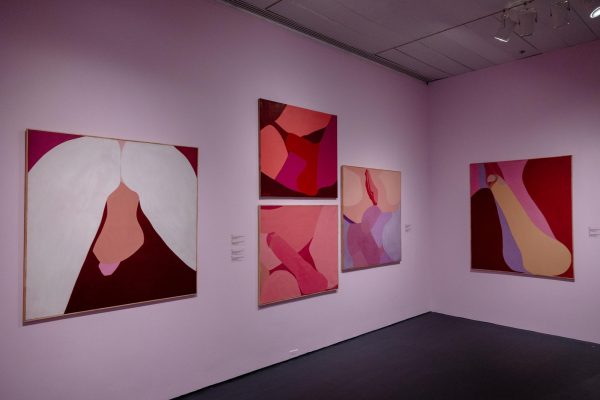
“Frozen Sex,” Minujín’s section devoted to sex beyond the literal innuendo of the mattress, is a celebration of intimacy from the 1970s. Minujín paints the human figure — most notably close-ups of genitals during intercourse — in warm tones many times over. “Long-Term Freeze” is a self portrait of Minujín with her back turned away from the viewer, lying down nude on a bed, entirely painted in pinks, oranges and purples. Minujín’s series was inspired by hallucinogens, the sexual revolution and her friend who was a sex worker, putting her at the forefront of feminist art. The original exhibition of these paintings was shut down by the Argentinian police only three hours after it opened.
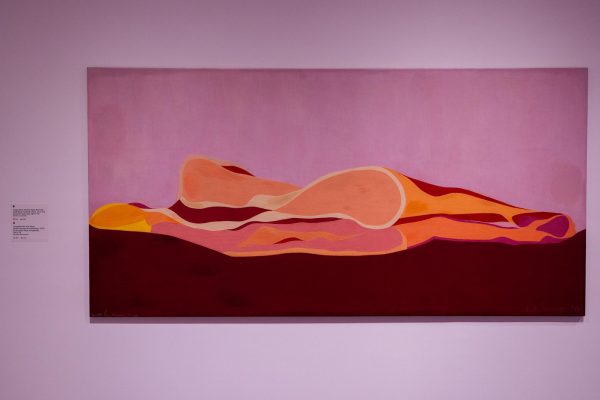
Argentina endured a tragic military dictatorship from 1976-1983, in which leftists, activists and artists were persecuted by the government. Thousands of citizens were kidnapped and killed. Minujín had moved back to Buenos Aires the year before the conflict started, and much of her art addresses it.
The most striking example is a photograph of one of Minujín’s experiential pieces titled “The Parthenon of Books.” In 1983, the year Argentina returned to democracy, Minujín erected a life-sized replica of the Greek Parthenon entirely made out of books that were banned by the government. The books were distributed to the public after the work was dismantled. “The Parthenon of Books” is a genius response to government censorship, creating a clear link between the free exchange of ideas and media and a democratic society. Minujín similarly created “The Tower of Babel with Books” when Buenos Aires was named the “World Book Capital” and “Big Ben Lying Down with Political Books” for the 2021 Manchester International Festival.
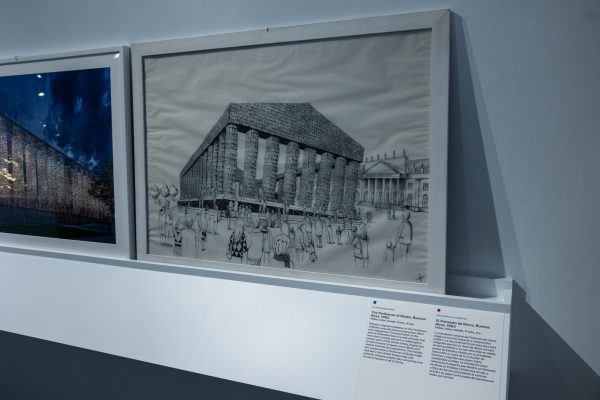
The space reinforces the sentiments clear in the mattress sculptures — the gallery is bright and fun to explore. The show is large and well-laid out, with the many works split into five separate subcategories and a plethora of information accompanying them. Minujín pays attention to every tiny detail: even the exhibit’s benches are fun, painted in hues of green and yellow. Moreover, the space devoted to images of Minujín’s book constructions has books that have been banned around the United States hanging up on the wall, such as “Maus” and “The Handmaid’s Tale.”
Minujín’s portfolio is impressive, with the museum showing viewers a vast array of sculptures, photography, performance art, experiential work, paintings and more. In addition to Minujín’s artworks, viewers also get a glimpse into her artistic process through the artist’s archives of sketches, letters and sources of inspiration. “Marta Minujín: Arte! Arte! Arte!” is an exhibition that holds many dualities successfully: educational and playful, serious and fun, and meaningful and light.
“Marta Minujín: Arte! Arte! Arte!” at the Jewish Museum is open until March 31. NYU students enter for free.
Contact Alexa Donovan at [email protected].























































































































































